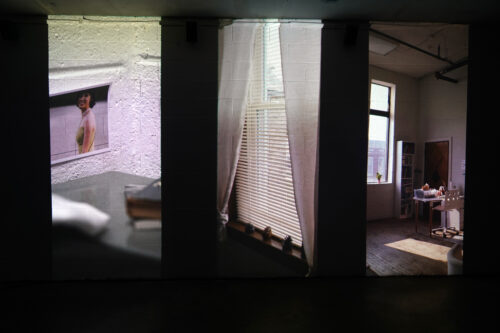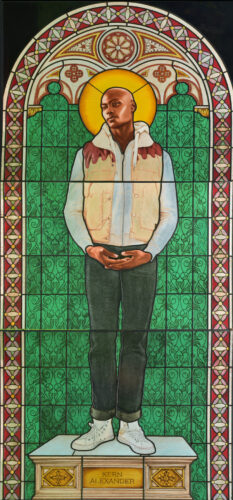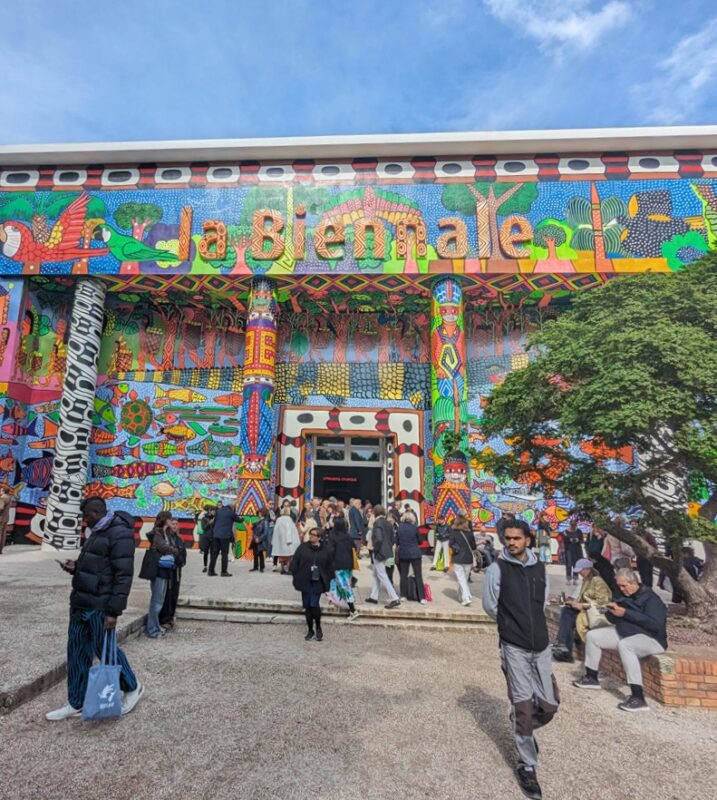In the Baltimore Jewelry Center’s latest solo exhibition, Grab Bag, recent resident artist Amelia Toelke examines jewelry as a powerful art form both on and off the body. True to its title, the solo show features a playful sampling of Toelke’s varied mediums and practices—from bold, colorful works on paper depicting jewels to actual jewelry, such as pendants, rings, and a new take on the vintage charm bracelet. Working with jewelry in both two-dimensional and wearable formats, Toelke probes the medium’s historical, aesthetic, and social functions.
Entering the BJC gallery, I was immediately drawn to Toelke’s works on paper, which fill the entire wall space. Two pieces, “Treasure” and “Amulet,” are particularly compelling as the only works that showcase two-dimensional charms, chains, and gemstones against black backdrops.
Other works on paper of comparable scale feature similar jewels and jewelry-related objects rendered in lustrous 24-karat gold leaf and gouache on white, blue, and pink backgrounds. Toelke’s two-dimensional works have a wonderful graphic quality—emphasizing the flatness of these traditionally three-dimensional baubles.















